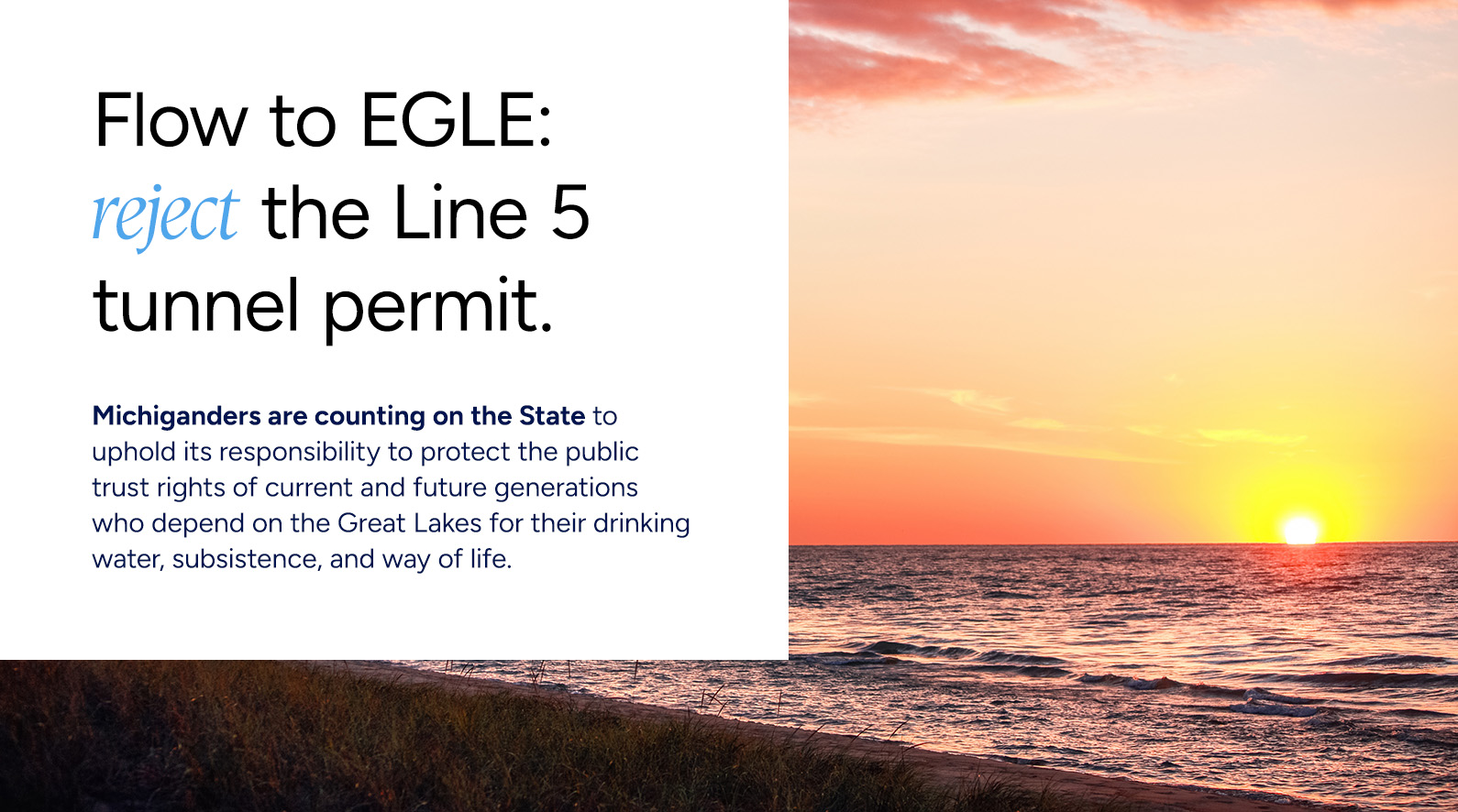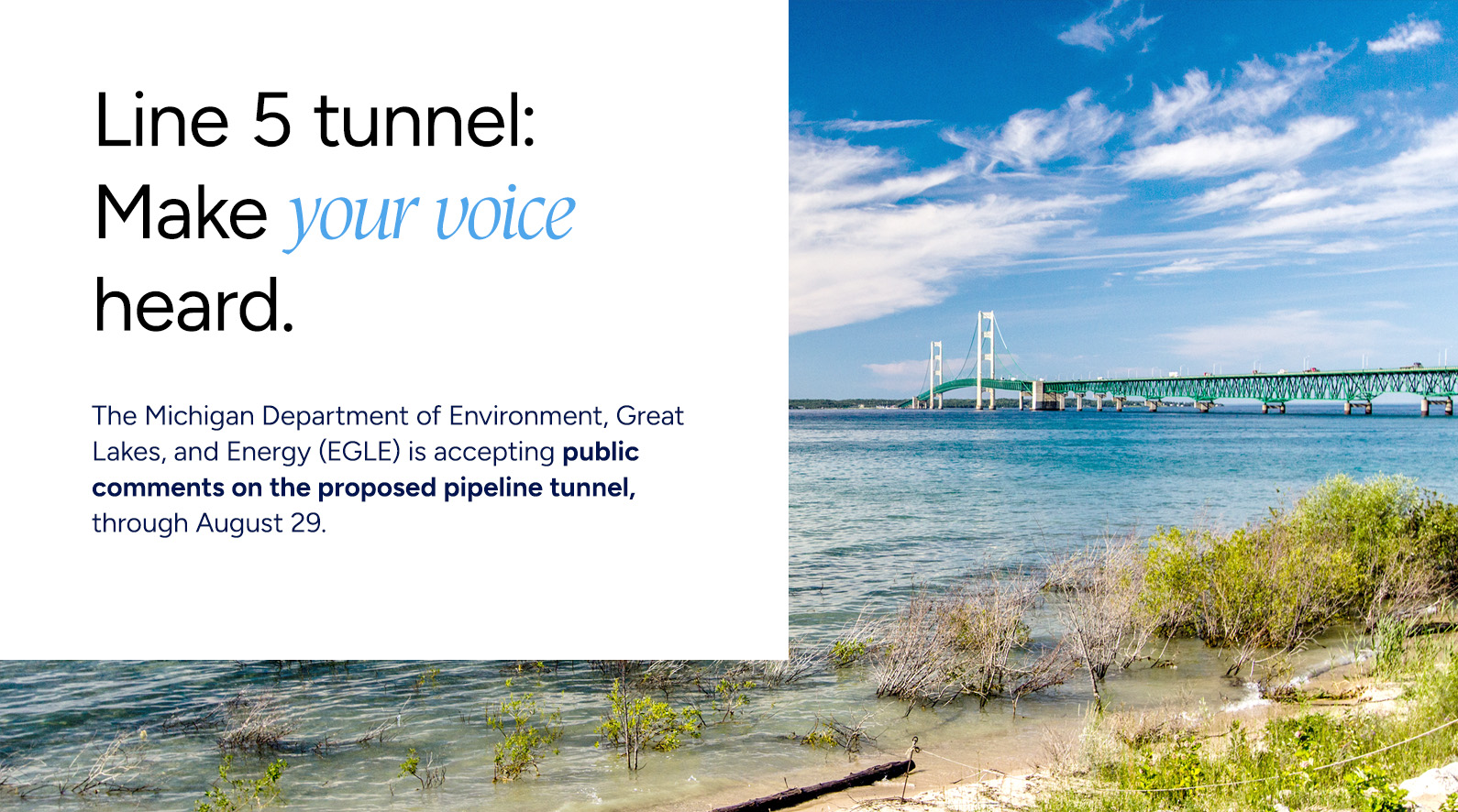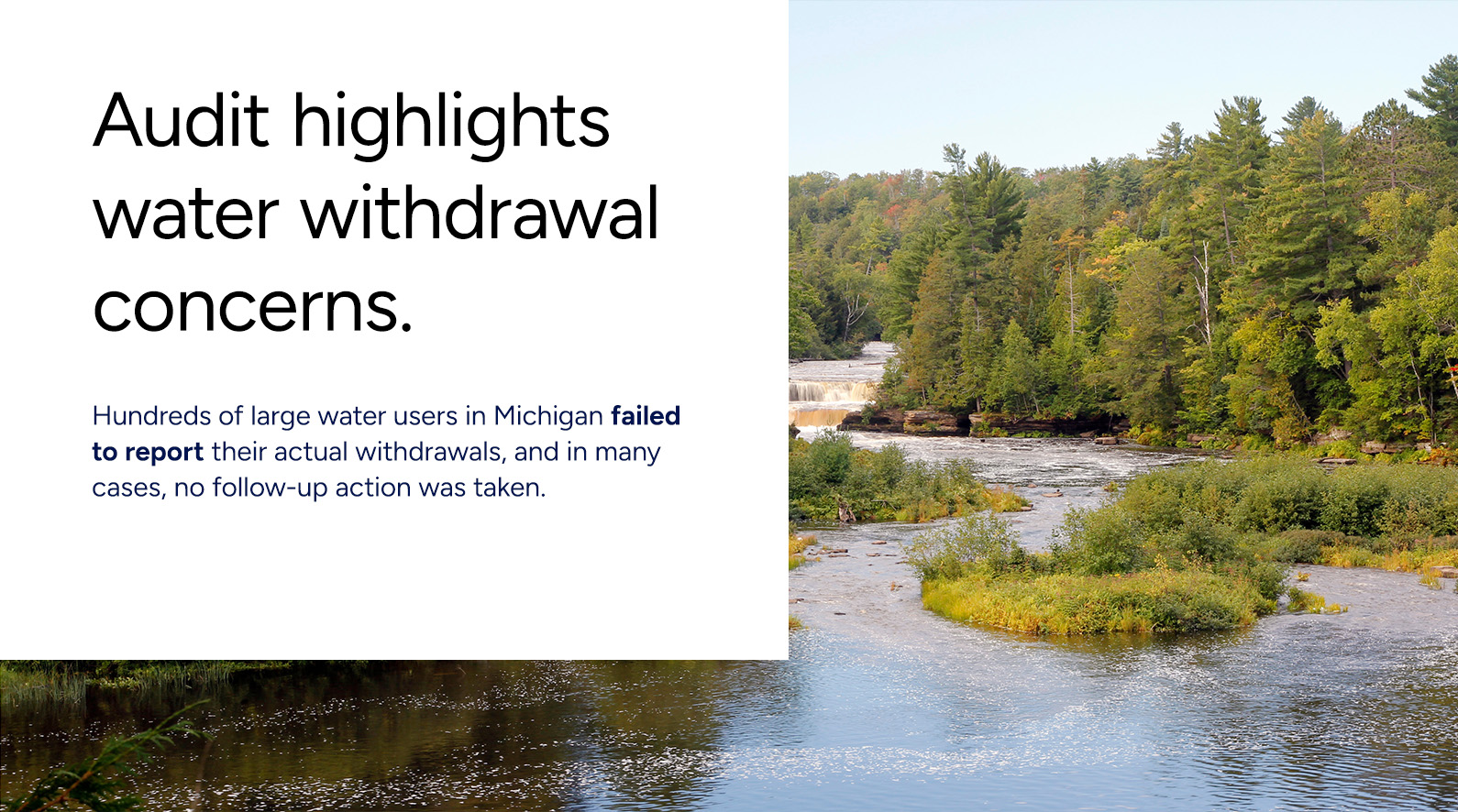
By Carrie La Seur
FLOW Legal Director
In April 2023, FLOW’s Dave Dempsey blogged about contamination at a quiet place called Sadony Bayou, north of White Lake along the Lake Michigan coastline, where lime piles and decades of industrial waste have decimated once-thriving habitat. The bayou doesn’t look like much from the road running by, but inside, it’s a struggling universe – an ancestral home and migration territory to dragonflies, long-horned caddisflies, damselflies, purple martins, blue herons, belted kingfishers, caspian terns, wood frogs, green frogs, Fowler’s toads, and a former spawning ground for pike. Once, bullfrogs sang.

(click to enlarge)
Once known as “Stump” (because a stump served as a post office) and Ferrysburg or Ferrisville, the community that formed at the old channel connecting the bayou to Lake Michigan was the first settlement in the White Lake area – a bustling logging town.
In the 1860s, Government Channel was constructed, connecting White Lake to Lake Michigan. By 1877 the Old Channel had been blocked off. Although still receiving water from Pierson Creek, Sadony Bayou had no way to cleanse and revive itself by moving water and sediments in and out, as bayous must to survive. Then, in the 1950s, Dupont Chemical arrived next to the bayou, depositing lime and other industrial waste on its property, which then migrated into soil and water. A 1965 berm breach in Dupont’s Pierson Creek Landfill, uphill from Pierson Creek, which feeds the bayou, caused extensive contamination with toxic waste. In 1967, a valve opened over Pierson Creek, diverting wastewater into the creek, killing everything.

(click to enlarge)
On top of the chemical burden, blowing and drifting dunes deposited enough sediment that algae began to choke the strangled bayou. Sadony Bayou was once very deep and flowed directly into Lake Michigan. Now it’s shallow, without flow. The sun beats down, warming the water. Nutrients from upstream agriculture and a golf course consume available oxygen, degrading habitat. Kayaks and canoes have disappeared, and anglers no longer line up to cast lines off the bridge by the Old Channel Inn for pike, perch, and largemouth bass.
When the Chemours Environmental Impact Committee (CEIC, pronounced “seek”) formed in 2018 to represent the concerns of local residents and ensure a thorough cleanup, they were focused on the many landfills and spill areas on the Chemours property. Over the past 6 ½ years, CEIC has communicated regularly with the Michigan Department of Environment, Great Lakes, and Energy’s Hazardous Waste Section, as it works with Chemours on its Facility Investigation and Corrective Measures Study. Last summer Chemours and EGLE signed an enforceable document, known as the Corrective Action Consent Order, which allows EGLE to approve actions and impose deadlines. Currently CEIC is awaiting release of the report that will provide insight into cleanup plans in the Corrective Measures Implementation plan.
Back in 2018, CEIC did not imagine that they would sidetrack into a related, yet unrelated mission – the restoration of Sadony Bayou. In 2023, Marty Holtgren, an aquatic biologist with experience in restoring waterways, joined CEIC’s efforts as project manager. CEIC, with the Muskegon Conservation District as fiscal sponsor, received an EGLE grant for an “Evaluation of Sadony Bayou to Support Restoration.” That work continued into 2024 with the help of experts brought in by Marty.
Meanwhile, Marty, CEIC, and fiscal sponsor Muskegon County Environmental Coordinating Council, received a grant from the White Lake Community Fund, called “Establishing a Vision for Sadony Bayou.” Marty and his team listened to residents in three visioning sessions while looking at historical data, maps, and photos of the bayou since the early 1800s.
These smaller grants prepared the way to begin restoration in earnest. Marty Holtgren and Caroline Gottschalk of the University of Wisconsin, with FLOW as fiscal sponsor, have submitted a pre-proposal for a National Fish and Wildlife Foundation-National Coastal Resilience Fund grant, to arrive at a community- and township-supported restoration design that is ready to advance to final design and permitting.
—–

(click to enlarge)
CEIC has also been busy these past several weeks with another water body, this one located on the Chemours property, just south of the giant lime pile and in the center of the plume of contaminated groundwater. In the words of one resident who visited Mirror Lake as a teen in the 1960s, “It was a wildlife paradise. A lot of ducks: Green- and blue-winged teal, black, and mallards. (A lot of them.) Mink, muskrats, red-tailed hawks, goshawk (like a big falcon), ruffed grouse. You would see them down there everywhere.”
CEIC has known for years that Chemours intended to dredge the lime from Mirror Lake, and when they suddenly received a Public Notice of Chemours’ application for a permit to “excavate the escaped lime from wetland area and at edge of Mirror Lake,” CEIC jumped into action, submitting comments and encouraging community members and supporters to respond as well, which would earn a chance for a public hearing. Comments ranged from where they intended to deposit the dredged lime, to the apparent lack of a restoration and monitoring plan, to concerns of how the dredging might influence the water level and the migration of the plume of contaminated water.
On May 5th, CEIC was pleased to receive a formal announcement of a virtual Public Hearing on May 27th at 6:00 pm. This notice is accompanied by a Restoration and a 10-year Monitoring plan developed by the Muskegon Conservation District. At this writing, CEIC is still consulting with experts regarding some details of the evaluation and plan and will be submitting further comments, as well as encouraging community members to consider submitting comments by the June 6 deadline.
These are encouraging developments, but local residents – and local bullfrogs – should expect nothing less than full transparency and a commitment to robust cleanup from the agency charged with “safeguard(ing) the state’s natural resources, including air, water, and land, from pollution, impairment, and destruction.” Michigan Constitution of 1963, Art. IV, Sec. 52.



















